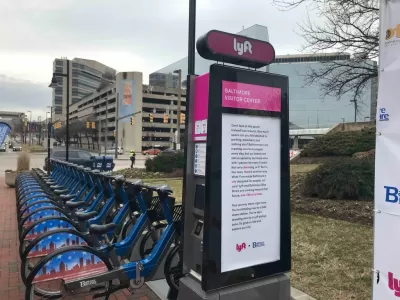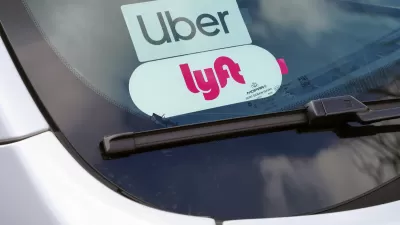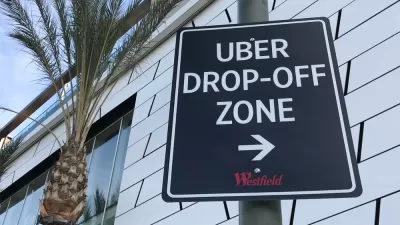After years of resisting efforts by cities to regulate their business and constant—but unprofitable—growth, Uber and Lyft are homing in on their unique strengths.

Despite small differences in their operations and business models, Uber and Lyft have essentially operated as interchangeable services for most customers for years. Now, writes Andrew J. Hawkins, the two transportation network companies (TNCs) are starting to differentiate themselves by centering their operations on each company's specific strengths, as evidenced by earnings reports issued last week by both TNCs.
"Uber’s main side hustle is delivery. Food and other delivery bookings in the fourth quarter grew 33 percent year over year." Meanwhile, Lyft president John Zimmer says his company has no plans to follow suit. "We want to have one main consumer that we’re building for. And again, we will not build a consumer-facing marketplace for groceries or food," Zimmer said. But Lyft has bolstered the micromobility side of its business, reports Hawkins, with bikeshare as its fastest-growing customer base, while Uber has "largely abandoned its two-wheeled operations."
Hawkins notes that, while both companies expressed enthusiasm about autonomous vehicles, both largely sold off their AV divisions, with Lyft still maintaining some ties through a deal with Argo.ai to put its vehicles on Lyft's platform.
The two rideshare giants continue to compete and face some of the same challenges, but, as Hawkins puts it, their recent earnings reports show that the two may take more different paths in the future.
FULL STORY: Uber and Lyft are finally starting to look like different companies

Maui's Vacation Rental Debate Turns Ugly
Verbal attacks, misinformation campaigns and fistfights plague a high-stakes debate to convert thousands of vacation rentals into long-term housing.

Planetizen Federal Action Tracker
A weekly monitor of how Trump’s orders and actions are impacting planners and planning in America.

In Urban Planning, AI Prompting Could be the New Design Thinking
Creativity has long been key to great urban design. What if we see AI as our new creative partner?

King County Supportive Housing Program Offers Hope for Unhoused Residents
The county is taking a ‘Housing First’ approach that prioritizes getting people into housing, then offering wraparound supportive services.

Researchers Use AI to Get Clearer Picture of US Housing
Analysts are using artificial intelligence to supercharge their research by allowing them to comb through data faster. Though these AI tools can be error prone, they save time and housing researchers are optimistic about the future.

Making Shared Micromobility More Inclusive
Cities and shared mobility system operators can do more to include people with disabilities in planning and operations, per a new report.
Urban Design for Planners 1: Software Tools
This six-course series explores essential urban design concepts using open source software and equips planners with the tools they need to participate fully in the urban design process.
Planning for Universal Design
Learn the tools for implementing Universal Design in planning regulations.
planning NEXT
Appalachian Highlands Housing Partners
Mpact (founded as Rail~Volution)
City of Camden Redevelopment Agency
City of Astoria
City of Portland
City of Laramie





























